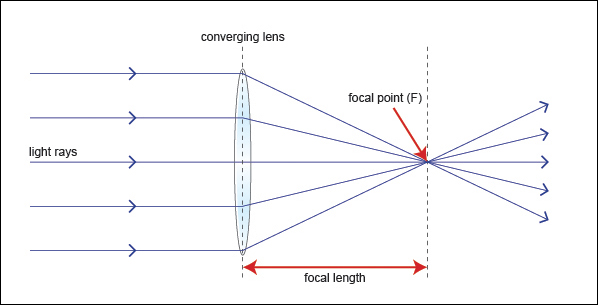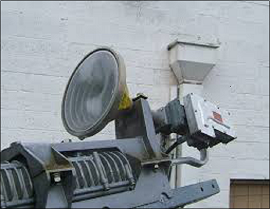
- Antenna Theory - Fundamentals
- Antenna Theory - Basic Parameters
- Antenna Theory - Parameters
- Antenna Theory - Near & Far Fields
- Antenna Theory - Radiation Pattern
- Isotropic Radiation
- Antenna - Beam & Polarization
- Antenna Theory - Beam Width
- Antenna Theory - Reciprocity
- Antenna Theory - Poynting Vector
- Types of Antennas
- Antenna Theory - Types of Antennas
- Antenna Theory - Wire
- Antenna - Half-Wave Dipole
- Antenna - Half-Wave Folded Dipole
- Antenna - Full-Wave Dipole
- Antenna Theory - Short Dipole
- Antenna Theory - Long Wire
- Antenna Theory - V-Antennas
- Inverted V-Antenna
- Antenna Theory - Rhombic
- Antenna Theory - Loop
- Antenna Theory - Helical
- Antenna Theory - Aperture
- Antenna Theory - Horn
- Antenna Theory - Slot
- Antenna Theory - Micro Strip
- Antenna Theory - Lens
- Parabolic Reflector
- Antenna Arrays
- Antenna Theory - Antenna Arrays
- Antenna Theory - Collinear Array
- Antenna Theory - Broad-side Array
- Antenna Theory - End-fire Array
- Antenna Theory - Parasitic Array
- Yagi-Uda Antenna Theory
- Log-periodic Antenna Theory
- Turnstile Antenna Theory
- Wave Propagation
- Antenna - Spectrum & Transmission
- Antenna - Types of Propagation
- Antenna - Lonosphere & its Layers
- Terms in Wave Propagation
- Antenna Theory Useful Resources
- Antenna Theory - Quick Guide
- Antenna Theory - Useful Resources
- Antenna Theory - Discussion
Antenna Theory - Lens
The antennas, which we have discussed till now, used the plane surface. The lens antennas use the curved surface for both transmission and reception. Lens antennas are made up of glass, where the converging and diverging properties of lens are followed. The lens antennas are used for higher frequency applications.
Frequency Range
The frequency range of usage of lens antenna starts at 1000 MHz but its use is greater at 3000 MHz and above.
To have a better understanding of the lens antenna, the working principle of a lens has to be known. A normal glass lens works on the principle of refraction.
Construction & Working of Lens Antenna
If a light source is assumed to be present at a focal point of a lens, which is at a focal distance from the lens, then the rays get through the lens as collimated or parallel rays on the plane wavefront.
The rays that pass through the centre of the lens are less refracted than the rays that pass through the edges of the lens. All of the rays are sent in parallel to the plane wave front. This phenomenon of lens is called as divergence.
The same procedure gets reversed if a light beam is sent from right side to left of the same lens. Then the beam gets refracted and meets at a point called focal point, at a focal distance from the lens. This phenomenon is called convergence.
The same can be better understood by observing the following diagram −

The ray diagram represents the focal point and focal length from the source to the lens. The parallel rays obtained are also called as collimated rays.
In the above figure, the source at the focal point, at a focal distance from the lens, gets collimated in the plane wave front. This phenomenon can be reversed which means the light if sent from the left side, gets converged at the right side of the lens.
It is because of this reciprocity, the lens can be used as an antenna, as the same phenomenon helps in utilizing the same antenna for both transmission and reception.

The image of the model of a lens antenna is shown.
To achieve the focusing properties at higher frequencies, the refractive index should be less than unity. Whatever may be the refractive index, the purpose of lens is to straighten the waveform. Based on this, the E-plane and H-plane lens are developed, which also delay or speed up the wave front.
Types of Lens Antennas
The following types of Lens Antennas are available −
Di-electric lens or H-plane metal plate lens or Delay lens (Travelling waves are delayed by lens media)
E-plane metal plate lens
Non-metallic di-electric type lens
Metallic or artificial dielectric type of lens
Advantages
The following are the advantages of Lens antenna −
In lens antennas, feed and feed support, do not obstruct the aperture.
It has greater design tolerance.
Larger amount of wave, than a parabolic reflector, can be handled.
Beam can be moved angularly with espect to the axis.
Disadvantages
The following are the disadvantages of Lens antenna −
Lenses are heavy and bulky, especially at lower frequencies
Complexity in design
Costlier compared to reflectors, for the same specifications
Applications
The following are the applications of Lens antenna −
Used as wide band antenna
Especially used for Microwave frequency applications
The converging properties of lens antennas can be used for developing higher level of antennas known as Parabolic reflector antennas, which are widely used in satellite communications. We will discuss about them in the next chapter.